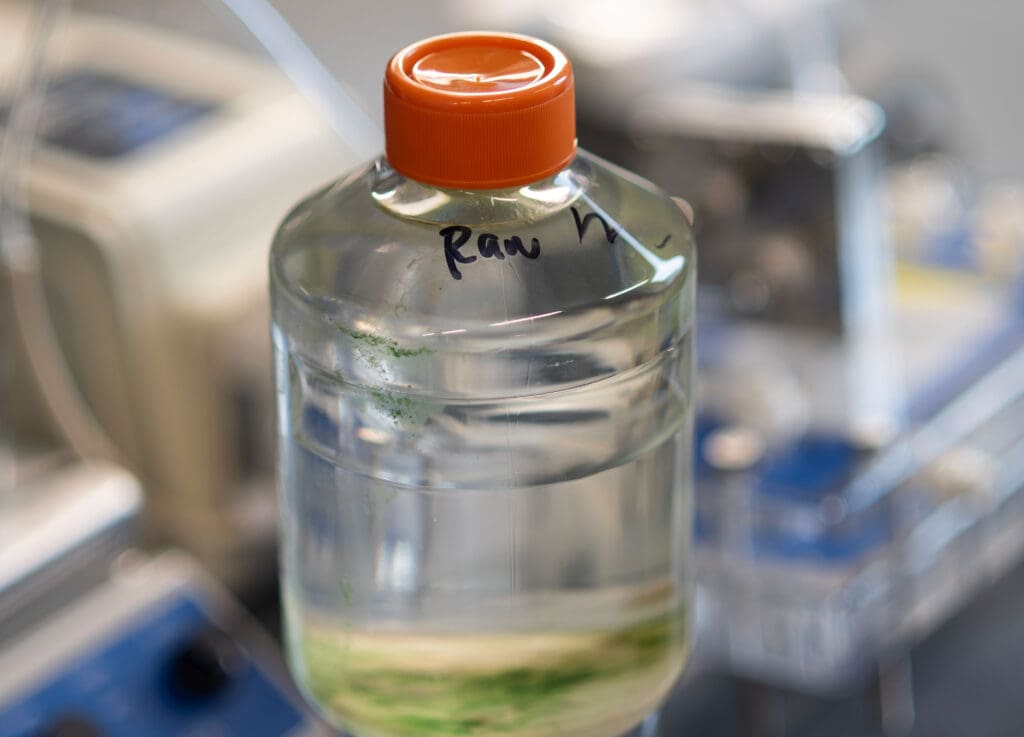Cleveland Water addresses discolored tap water, confirms safe to drink – Spectrum News

Report on Water Quality Incident in Cleveland in Relation to Sustainable Development Goals
1.0 Incident Summary
Cleveland Water has issued a report concerning recent water discoloration incidents affecting customers in its northwest service area. The utility has confirmed that despite the aesthetic changes, the water remains safe for consumption and use, aligning with public health mandates. This incident highlights the operational challenges in maintaining consistent water quality and the importance of resilient infrastructure in achieving key Sustainable Development Goals (SDGs).
2.0 Analysis of Cause and Link to SDG 14: Life Below Water
The primary cause of the water discoloration has been identified as a seasonal environmental phenomenon within Lake Erie, the region’s primary water source.
- Low Oxygen Levels: Hypoxic (low oxygen) conditions in the lake have led to an increase in the dissolution of naturally occurring minerals, such as iron and manganese.
- Impact on Water Treatment: These excess minerals entered the water supply, causing the discoloration observed by consumers.
This event directly correlates with SDG 14: Life Below Water, which emphasizes the conservation and sustainable use of oceans, seas, and marine resources. The health of Lake Erie as an aquatic ecosystem is intrinsically linked to the quality of the raw water available for public consumption. The hypoxic conditions underscore the environmental pressures on large bodies of freshwater and their subsequent impact on human services.
3.0 Utility Response and Commitment to SDG 6: Clean Water and Sanitation
In response to the incident, Cleveland Water initiated a series of measures to manage the situation and ensure the continued delivery of safe water, directly supporting the objectives of SDG 6: Clean Water and Sanitation.
- Adjustment of Treatment Protocols: The utility immediately modified its water treatment processes to counteract the high mineral content. While treated water leaving the plant is clear, residual minerals in the distribution network can still cause discoloration.
- System Flushing Operations: Crews were dispatched to flush fire hydrants in the affected areas. This action helps to expel the mineral-rich water from the distribution system and restore water clarity.
- Public Health Assurance: A key component of the response was public communication confirming that the water poses no health risks, thereby upholding the core tenet of SDG 3: Good Health and Well-being.
These actions demonstrate a commitment to Target 6.1 of the SDGs, which aims to achieve universal and equitable access to safe and affordable drinking water for all. The utility’s adaptive management strategy is crucial for building resilient water systems as envisioned in SDG 11: Sustainable Cities and Communities.
4.0 Conclusion
The water discoloration event in Cleveland serves as a case study on the interconnectedness of environmental health (SDG 14) and public utility management (SDG 6). While the immediate issue was aesthetic, the underlying cause points to broader environmental challenges affecting source water quality. The effective response by Cleveland Water, prioritizing public health and operational transparency, reinforces the importance of robust infrastructure and adaptive strategies in ensuring that communities have continuous access to safe and clean water.
1. Which SDGs are addressed or connected to the issues highlighted in the article?
The article on Cleveland’s discolored water touches upon several Sustainable Development Goals, primarily focusing on water quality, public health, and the health of the source ecosystem.
-
SDG 6: Clean Water and Sanitation
This is the most directly relevant SDG. The entire article revolves around the quality and safety of drinking water provided to customers. It discusses the treatment of water (“adjusted our water treatment methods”), the state of the water distribution system (“remnants can still be found in our distribution system”), and the condition of the source water (“low levels of oxygen within Lake Erie”).
-
SDG 3: Good Health and Well-being
The article explicitly addresses the health implications of the discolored water. The utility’s assurance that “there are no health concerns and the water is safe to use” directly connects the issue of water quality to the goal of ensuring healthy lives and promoting well-being for all.
-
SDG 14: Life Below Water
The root cause of the water discoloration is identified as “low levels of oxygen within Lake Erie.” This points to a significant environmental issue within the lake’s ecosystem. Low oxygen levels (hypoxia) are detrimental to aquatic life and indicate broader problems like pollution, which is a core concern of SDG 14.
2. What specific targets under those SDGs can be identified based on the article’s content?
Based on the issues discussed, the following specific targets can be identified:
-
Target 6.1: By 2030, achieve universal and equitable access to safe and affordable drinking water for all.
The article’s focus is on ensuring the water supplied to Cleveland customers is safe for consumption, despite its discoloration. The utility’s statement that “the water is safe to use” and their actions to flush the system are efforts to maintain the safety of the drinking water supply, which is central to this target.
-
Target 6.3: By 2030, improve water quality by reducing pollution…
The problem originates from poor water quality in the source, Lake Erie, characterized by “low levels of oxygen.” This indicates a need to improve the ambient water quality of the lake itself, which is the aim of Target 6.3.
-
Target 3.9: By 2030, substantially reduce the number of deaths and illnesses from hazardous chemicals and air, water and soil pollution and contamination.
Cleveland Water’s public assurance that “there are no health concerns” is a direct response to potential public fear about illnesses from contaminated water. Their management of the situation aims to prevent any health impacts, aligning with the goal of reducing illnesses from water pollution.
-
Target 14.1: By 2030, prevent and significantly reduce marine pollution of all kinds, in particular from land-based activities, including… nutrient pollution.
The “low levels of oxygen within Lake Erie” is a classic symptom of eutrophication, which is often caused by nutrient pollution from land-based sources. Addressing the root cause of the discolored water requires tackling the pollution that leads to low oxygen in the lake, which is the focus of this target.
3. Are there any indicators mentioned or implied in the article that can be used to measure progress towards the identified targets?
The article mentions or implies several qualitative and quantitative indicators:
-
Indicator for Target 6.1: Population using safely managed drinking water services (Indicator 6.1.1).
The article implies the use of this indicator. The utility’s declaration that the “water is safe to use” suggests that they are monitoring water quality parameters (like mineral content, microbial presence, etc.) to ensure it meets safety standards, even if aesthetic qualities like color are affected. The discoloration itself serves as a negative qualitative indicator that prompts further action and monitoring.
-
Indicator for Target 6.3: Proportion of bodies of water with good ambient water quality (Indicator 6.3.2).
The article provides a direct, though not quantified, indicator for the state of Lake Erie. The mention of “low levels of oxygen” is a key measure of ambient water quality. A low oxygen level indicates that the lake, or a portion of it, does not have “good” ambient water quality.
-
Indicator for Target 3.9: Mortality rate attributed to unsafe water (Indicator 3.9.2).
The article implies the goal of keeping this indicator at zero. By stating there are “no health concerns,” the utility is communicating that they are successfully managing the water system to prevent any waterborne illnesses or deaths related to this event.
-
Indicator for Target 14.1: Index of Coastal Eutrophication.
The “low levels of oxygen” in Lake Erie is a direct consequence and indicator of eutrophication. Measuring oxygen levels in the lake serves as a proxy for monitoring progress on reducing the nutrient pollution that causes this condition.
4. Table of SDGs, Targets, and Indicators
| SDGs | Targets | Indicators Identified in Article |
|---|---|---|
| SDG 6: Clean Water and Sanitation | 6.1: Achieve universal and equitable access to safe and affordable drinking water for all. | The assurance that the water is “safe to use,” implying monitoring of water quality parameters against safety standards. The discoloration itself is a qualitative indicator of a system issue. |
| 6.3: Improve water quality by reducing pollution. | The mention of “low levels of oxygen within Lake Erie” as a direct measure of poor ambient water quality in the source water body. | |
| SDG 3: Good Health and Well-being | 3.9: Substantially reduce illnesses from water pollution and contamination. | The statement of “no health concerns,” implying the absence of reported illnesses from the water and successful prevention of health impacts. |
| SDG 14: Life Below Water | 14.1: Prevent and significantly reduce marine pollution of all kinds, including nutrient pollution. | The “low levels of oxygen” in Lake Erie, which serves as a key indicator for eutrophication, a form of pollution targeted by this goal. |
Source: spectrumnews1.com

What is Your Reaction?
 Like
0
Like
0
 Dislike
0
Dislike
0
 Love
0
Love
0
 Funny
0
Funny
0
 Angry
0
Angry
0
 Sad
0
Sad
0
 Wow
0
Wow
0



























;Resize=805#)



















































